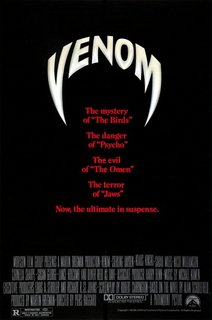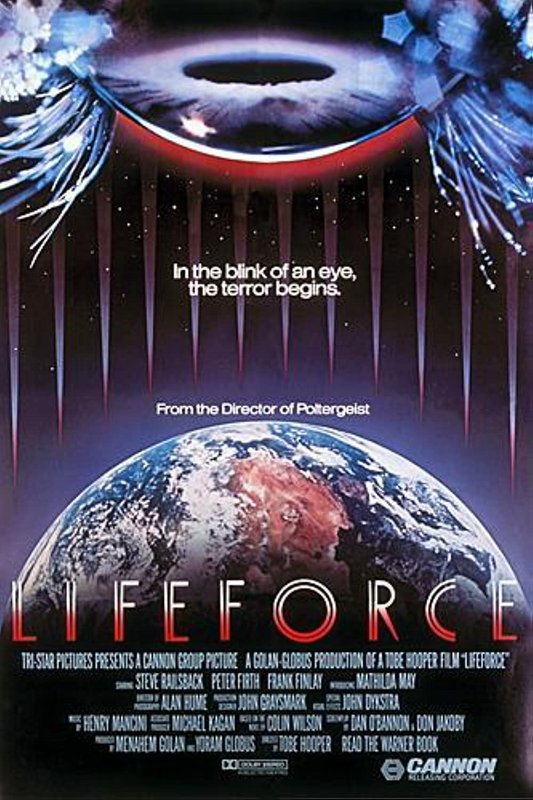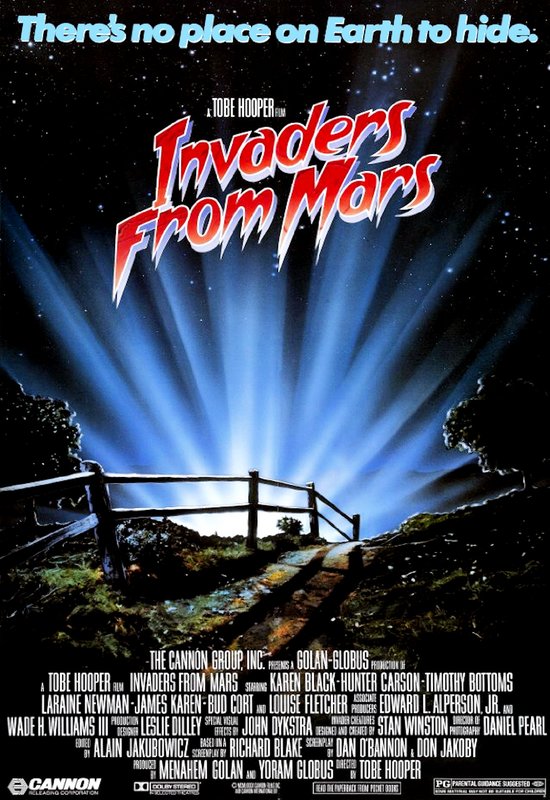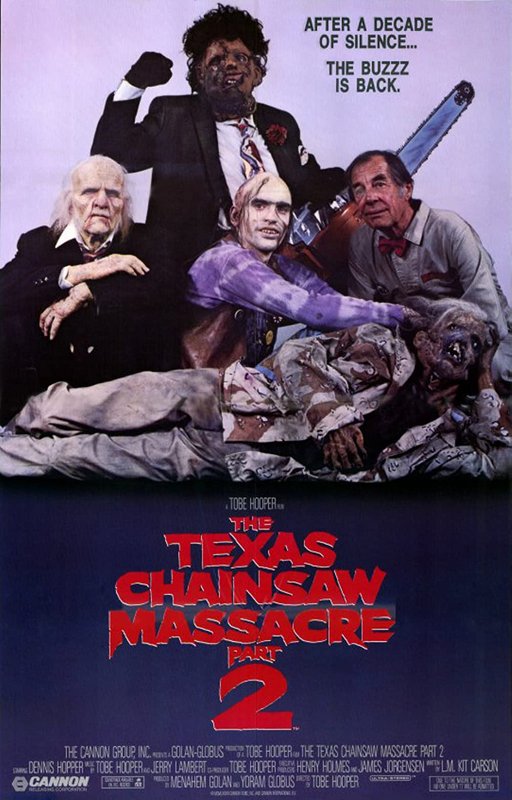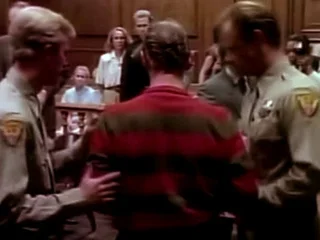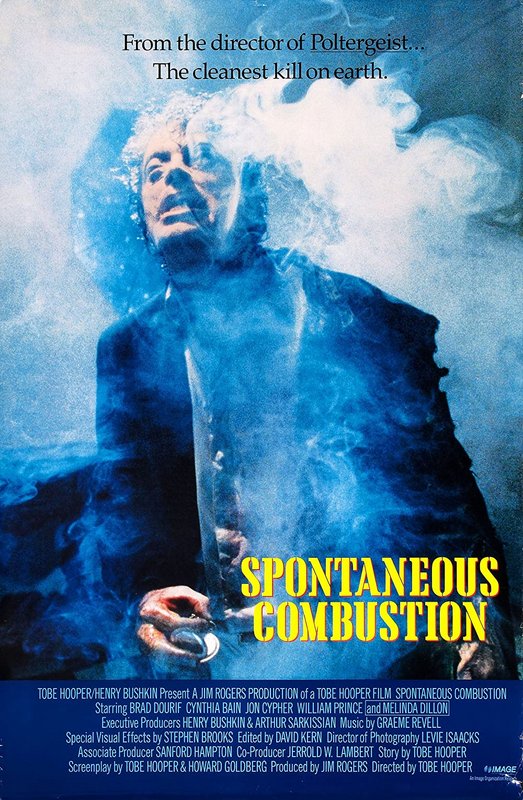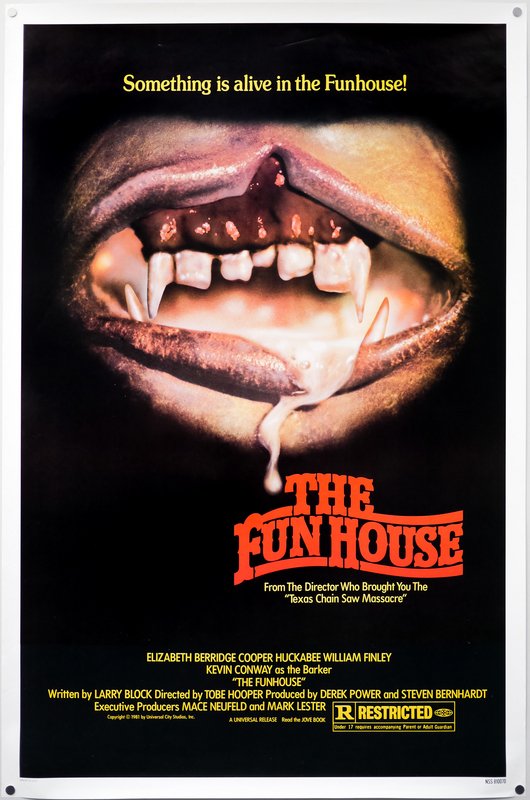
The Funhouse - 1981
Directed by Tobe Hooper
Written by Lawrence J. Block
Starring Elizabeth Berridge, Cooper Huckabee, William Finley
Sylvia Miles & Kevin Conway
A carnival is the place to go it seems. The fourth season of American Horror Story (a show which varied wildly in quality from season to season) - Freak Show - was probably the best. Nightmare Alley has been resurrected by Guillermo del Toro, with the filthy cutthroat carny atmosphere seeping into every frame. Freaks still has it, after nearly 100 years. How ironic that the carnival would be the perfect place for horror to manifest - but that's part of the place's attraction. Tobe Hooper's The Funhouse gets this aspect of his mostly overlooked and forgotten film completely right, and it's a shame he didn't quite manage to bring it off. Nevertheless, it is an awfully good monster movie, and a lot of fun. One of the most surprising things about it is that the slow "nothing is really happening" first half is one of the best things about the film. It manages to soak that dirt-filled scum-ridden world through the screen, and although it's a wonder I never came across it during that special time when videos became a thing (the early 80s), I'm kind of glad I didn't. I wouldn't have had the patience, and I wouldn't have appreciated the various references and callbacks to the monster movies of old.
Amy Harper (Elizabeth Berridge) has a hot date in Buzz Dawson (Cooper Huckabee), and although she's been warned not to go to the carnival by her parents (apparently this particular one has left a trail of bodies in it's wake) she goes anyway - peer pressure is an irresistible force. With them on a double date are Liz (Largo Woodruff) and Richie (Miles Chapin). Unbeknownst to them, Amy's little brother Joey (Shawn Carson) tags along behind. After an enjoyable night gawking at cows with deformities, spying scantily-clad ladies through holes in a sideshow tent and annoying the carnival clairvoyant Madame Zena (the awesome Sylvia Miles) Richie hits upon the great idea of staying the night in the funhouse - and sex-wise, it is a great idea, until all four spy a masked, raspy young carnie, Gunther (Wayne Doba) pay Zena for intercourse. Gunther has an unfortunate premature ejaculation, and when Zena refuses to refund the money he kills her in a fit of rage. Gunther's father, so to speak, Conrad Straker (Kevin Conway) is summoned to help hide the body - and when he discovers our four interlopers, he orders Gunther - revealed to be a horrible monster - to kill them before they can escape.
I think Gunther is meant to be a human oddity - his brother in foetus form sits in a jar in the freak show and is decidedly more recognizable as an actual baby. The great Rick Baker, winner of 7 Oscars, did not hold back when creating something truly monstrous - almost going a little too far with his cleft-head, drooling, albino horror. It provides the film with a great moment, as until the reveal Gunther wears a full Frankenstein monster mask (thanks Universal - it helps to own those rights) which doesn't come off until a particularly dramatic moment. Wayne Doba was a part-time mime, and that was needed because Baker's monster effects didn't go so far as to include moving features - every emotion this monster has must be transmitted through Doba's body, and I have to say he did a particularly good job at that. You see plenty of that monster's face, and although at the time you really want to, when it's all over you take into consideration that perhaps there should have been more shadow and mystery. Not that it was a secret - in fact, Gunther's face graced the front cover of Fangoria magazine not long before the movie came out.
This really is a film of two halves. The first, where our four "teenagers" (Cooper Huckabee was 30-years-old at the time) roam the carnival. They come across what were real mutated cows, spy what were real local strippers and all the while the husky deep voice of Kevin Conway invites them - Conway suggested he play all 3 carnival barkers and Tobe Hooper loved the idea. He plays the Freak Show Barker, the Strip-Show Barker and the Funhouse Barker with that mix of huckster showiness with an undertone of grinding boredom they all can't quite stifle. The barker has used the same lines over and over, night after night, until even the booze doesn't help lift that shroud of monotony. The second half of the film has them trapped in the impossibly large funhouse, various props (a wonderful array of them) always on display. Production Designer Mort Rabinowitz, who had been with Hooper for Salem's Lot worked wonders again, with the funhouse layout and design being a particularly well thought-out vision. The second half of the production was far more rushed, and many scenes had to be cut - and this kind of shows unfortunately. Still, it's a fun ride all the same.
Tobe Hooper had cinematographer Andrew Laszlo brought on board primarily because of how much he admired his work filming The Warriors - and once again the vibrant colour is alive in every shot for this film. He also got a first try at a magnificent crane which could lift him above ferris-wheel height, and such was Laszlo's delight he maintained that he have use of it for every film he was director of photography on. I think he did a fine job, along with John Beal who scored the movie. The Funhouse soundtrack is now a collector's item, and is a pronounced return to the bombastic, symphonic heightened-suspense music you'd hear coupled with monster movies in the old days. Inserted are many carnival-themed moments, and different sounding interludes to match up with moments of absolute horror. The music is given much more emphasis and care than it would if it were being phoned in, and it probably helped that Beal could be called in now that Hooper was working with Universal Studios and could rely on a larger budget than he had in the past. It's an orchestral carnival ride in itself, and is worth listening to.
Once again, Hooper goes for atmosphere above blood in this horror film, and instead of helping him it hurt him with audiences. I'm on Hooper's side in this - it's a much better film by focusing on suspense, but by 1981 horror audiences had changed dramatically, and this is why The Funhouse never really caught on, and why it's still looked down upon by many today. There's something very terrible in the way these kids (along with Zena) die - whether it be an accidental axe in the head after being hanged, clawed to death by Gunther during a traumatic rape, or caught in the gears of a funhouse mechanism. We don't really need blood spurting everywhere to bring home how horrible these murders are. Others are a little miffed at how long it takes to get to the killing and mayhem, but as I've already said - that scummy carny atmosphere is enough for me. Watching William Finley play Marco the Magnificent during an interlude for the four, and witnessing a particularly brutal blood-filled fake-out is also a lot of fun. I love Finley, and seeing him in something I've never seen before is quite a treat.
If any horror film has gone under the radar all these years, it's The Funhouse, and it deserves rediscovery. It's not without it's flaws, and it's not a masterpiece, but it's a damn fine film - heaps of fun, well made and worthy of being remembered. It overflows with loving references to the likes of Carpenter's Halloween, Hitchcock's Psycho along with the likes of Frankenstein and The Wolfman. Filmmaking wasn't an easy process for Hooper. The fact that the second half of this film had to be so rushed and compromised really ate away at him and caused him distress - but that's only because he was a perfectionist and wanted to create a vision that he had, and had half pulled off to that point. The Funhouse coupled with the success of Salem's Lot and the enduring legend of The Texas Chainsaw Massacre were enough for Poltergeist to be offered to him by Spielberg. By that stage he really was an up-and-coming great, albeit a slightly troubled one.
On it's surface, Funhouse looks and feels like a modern slasher movie, especially when confronted with unnecessary nudity in the film's first few moments (an addition brought on by producers who were worried there wasn't enough fun stuff to start the film with) - but it's really different when you take a closer look at it, and isn't the kind of throwaway rubbish most people would have thought it might be. It's a film made with care, and not your typical teen scream murder marathon, which more often than not bore me. Instead it's another journey into the heart of the carnival - a place that has fascinated me more and more as cinema and television have peered into it's dark heart. That's what Tobe Hooper does in this, and it's more than a fleeting glance - from the moment we get there there's a sense of the squalid themes in this film leading us to some sad reflection on the film's monster. Of course it's fun, full of suspense and death - and satisfies our urge for horror, but I find it's stuck with me as a film that the filmmakers actually enjoyed making and had a sense of pride and careful craftsman-like consideration about. There's no amount of money that can buy that. It really was like a visit to a carnival.
__________________
Remember - everything has an ending except hope, and sausages - they have two.
Latest Review : Before the Rain (1994)
